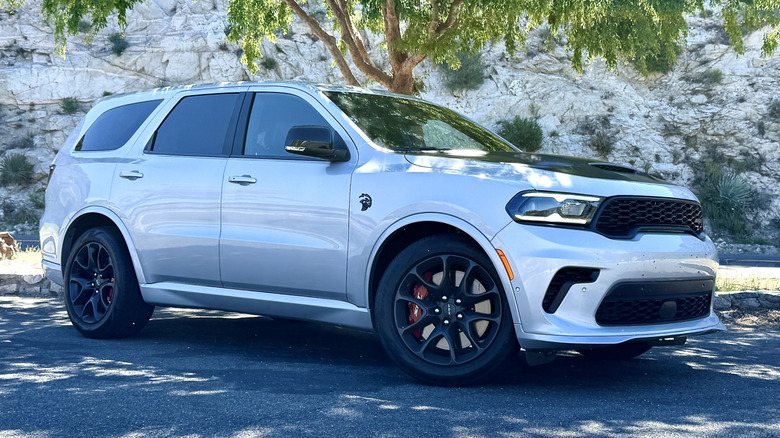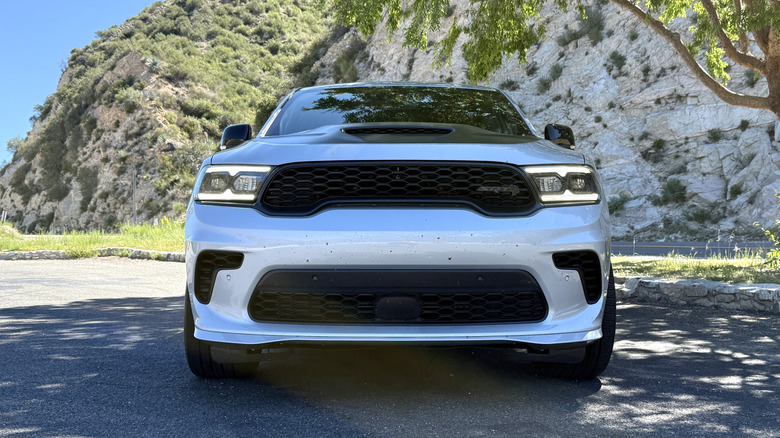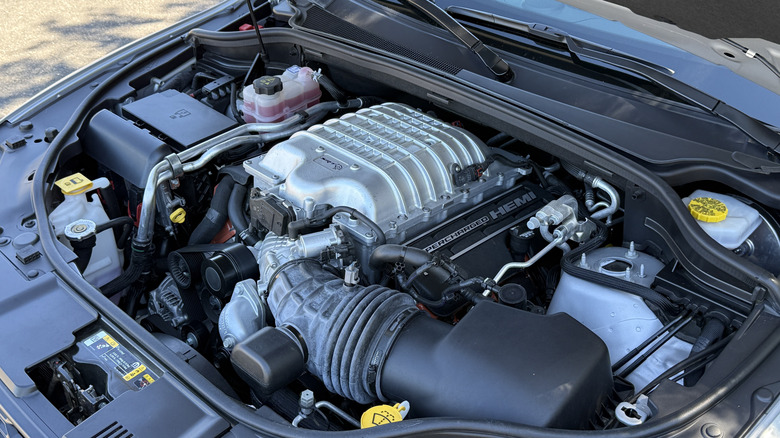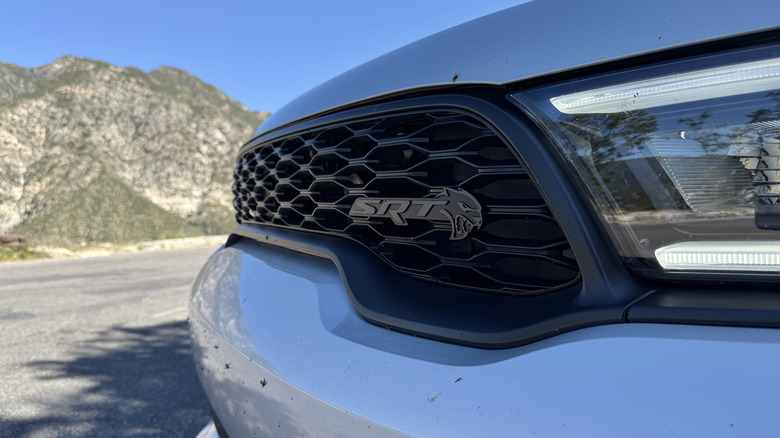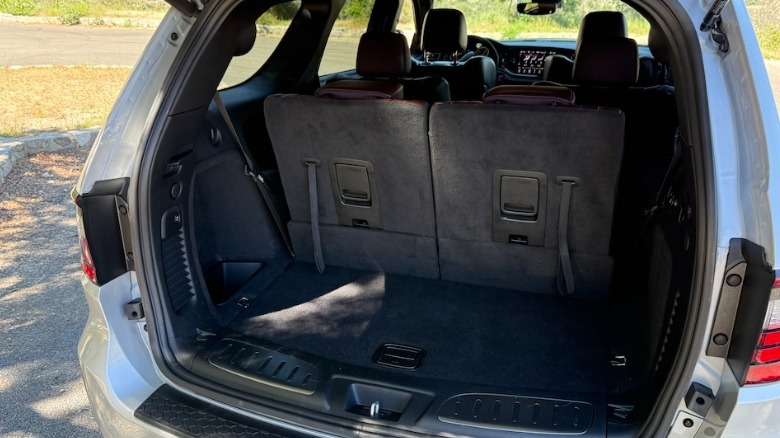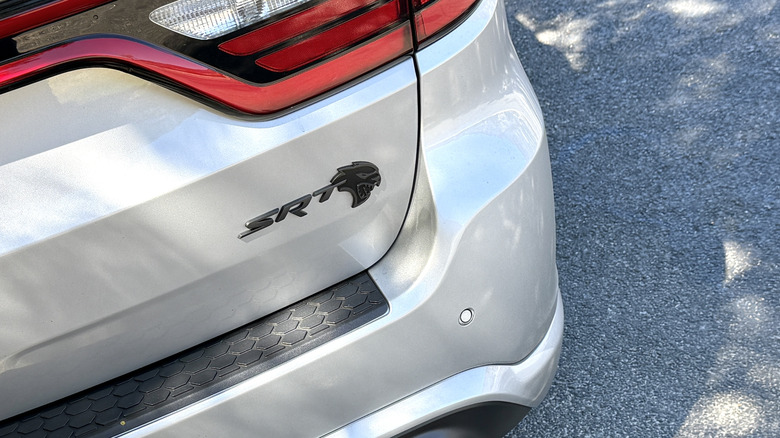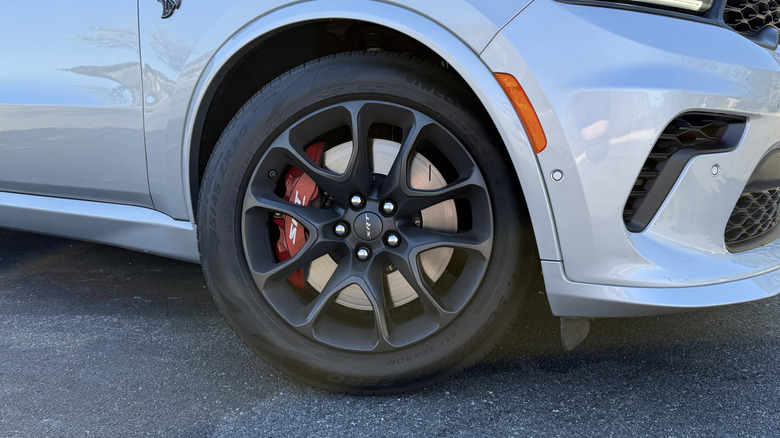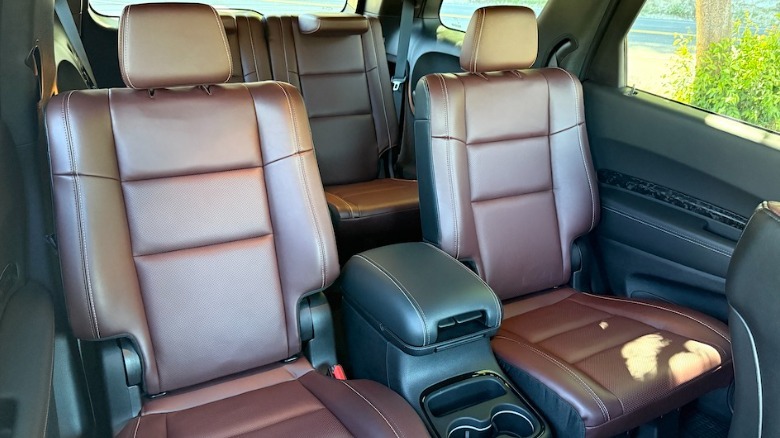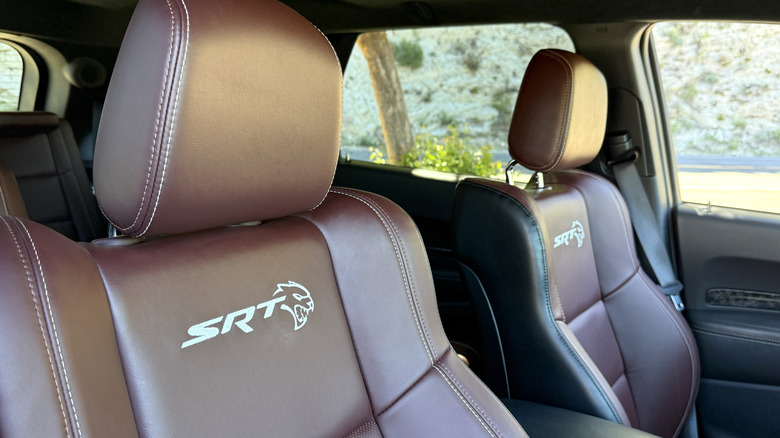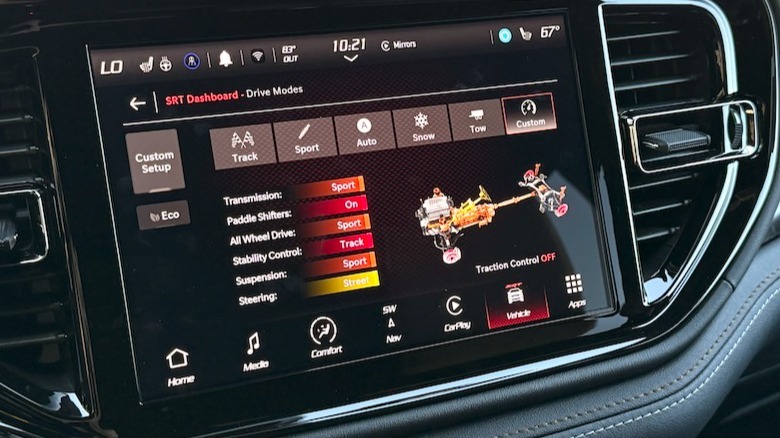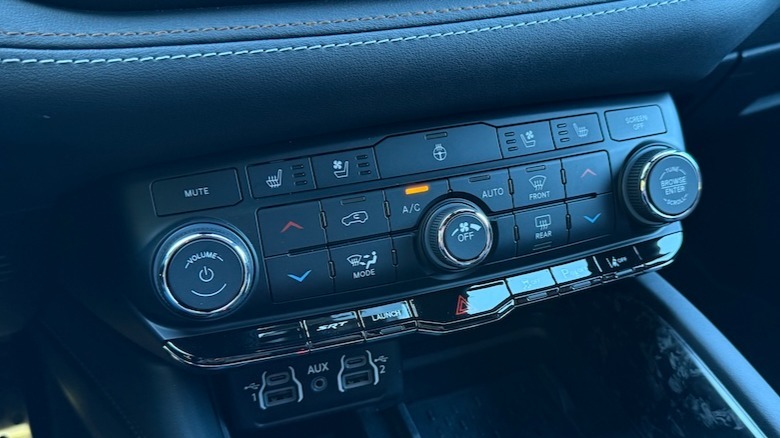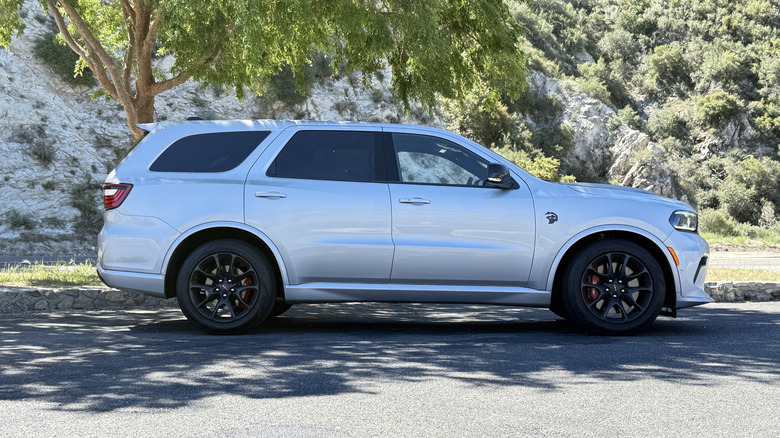2025 Dodge Durango SRT Hellcat Review: A Rare And Guilty Pleasure
Dodge is having a hard time saying goodbye to the Hellcat engine, and it would appear that the car-consuming public is too. After debuting in the Challenger and Charger way back in 2015 and garnering plenty of success, the massive supercharged V8 made its way into Ram pickup trucks and various Stellantis SUVs. The collective automotive world shouted "Hellcat all the things!" and no Stellantis platform suggested was too absurd. I lobbied for the Hellcat engine to be stuffed into Fiat 124's and Chrysler Pacificas, but sadly, no high-ranking engineers heard my cries.
For years, the Hellcat engine powered the most-powerful versions of several cars from several brands: Jeep, Ram, and Dodge. With fuel economy standards continuing to increase, however, the sunsetting of the Hellcat engine was a matter of when, rather than if. The engine made its way into a number of final-edition models and "Last Call" trims as far back as 2023, with scarcely-believable four-digit horsepower ratings to really drive the point home that the engine was going away – but that still wasn't the end. Now, a decade after the screaming 6.2-liter powerplant was announced, and a few years after it was supposed to be deceased, it's left clinging to life under the hood of a three-row family hauler.
The sticker shock is real
The 2025 Dodge Durango SRT Hellcat (that's its full legal name) is the last new vehicle still powered by the Hellcat engine and when the folks at Dodge told me they had one available in Southern California for a week-long test, I jumped at the chance. Why? Because I'm nothing if I'm not nostalgic. I fondly remember doing seemingly-endless rolling burnouts in the early Charger Hellcats, grinning ear-to-ear as the supercharger whine filled the Ram TRX's cabin, and four-wheel drifting the Hellcat-powered Grand Cherokee Trackhawk on a racetrack – I figured this Durango could provide at least some similar thrills. It turns out, I'm having trouble letting go of the Hellcat engine too. Before I even took the Durango out for a test drive, though, there was some serious sticker shock.
The MSRP of a base-trim 2025 Durango GT with rear-wheel drive is $40,490 (including $1,995 destination fee). The least-expensive Hellcat version of the Durango more than doubles that price, checking in at $86,990. The price of the Durango Hellcat I tested, however, was nearly three times the price of the base GT. There were some pricing changes between my test of the Durango and the writing of this review, but the pricing sheet that came with the vehicle read $115,315. If you want to spec one out today, you'd have to select Hammerhead, Silver Bullet, or Brass Monkey — the three special edition versions — all with a base price of $103,285.
Nostalgia is pricey but it might be worth it
After the initial sticker shock wore off, I put the supercharged 6.2-liter V8 to good use. Base V6-powered trims of the Durango make do with 295 horsepower and 260 lb-ft of torque, while the optional 5.7-liter makes 360 hp and 390 lb-ft. The 6.2-liter Hellcat, though, delivers 710 hp and 645 lb-ft.
Burying my foot in the throttle caused giant surges of power. It wasn't violent acceleration like some modern EVs with similar figures, but it was authoritative: like strapping a rocket to a large boat and lighting the fuse. According to Dodge, it'll do zero to 60 mph in 3.5 seconds, a claim certified by the NHRA.
Throttle tip-in is a bit more sensitive than I'd like, but it's hard to expect a gentle experience in something this powerful. In flat-out acceleration runs, the eight-speed automatic transmission fires off upshifts relatively quickly, but I did have some issues with the column-mounted paddle shifters. If you're using the paddle shifters during a launch, you need to plan ahead; there's a big delay between pulling the shifter and getting the shift you requested. For launches, I ended up relying on the Jeep's on-board systems and automatic mode instead, which was far less frustrating. The supercharger whine, the growling V8 exhaust, and the "oh man, the horizon got here a lot faster than I expected!" sensations all still exist in the Durango Hellcat, so at least that urge was satisfied.
Fuel economy suffers when you drive like a hooligan
As it turns out, all that bury-my-right-foot business had me taking a few extra trips to the gas station during my time with the Durango Hellcat. Fuel economy is certain to be bad with almost any high-horsepower internal combustion engine, but with the Hellcat it's nearly off the charts. The EPA rates it at 13 mpg combined (12 city/17 highway) but you'll need a very light right foot to achieve those numbers. With a bit of enthusiastic driving I was easily averaging single-digit fuel economy.
A bit of perspective on that 13 mpg rating: If every available car for sale in 2025 were ranked based on the worst fuel-economy ratings from the EPA, the Durango Hellcat would rank 7th. It falls behind the Bugatti Mistral, Lamborghini Revuelto, Mustang GTD, Ferrari Purosangue, Cadillac Escalade V, and Ferrari Daytona SP3. Of those six cars, three use twelve-cylinder engines and one uses sixteen cylinders. None of this information about (dire) fuel economy is breaking news, but it still warrants mentioning.
Heavy is the SUV that wears the crown
Part of the equation with fuel economy is weight. The 1,025-horsepower Dodge Challenger Demon 170 had the same 13-mpg rating, with much more power. But with the big Hellcat engine, standard all-wheel drive, and three rows of pretty plush seats, the Durango is significantly heavier than any Challenger. The Durango Hellcat has a claimed curb weight of 5,575 lbs and all that weight pulls the Durango out of line in almost every corner. Enter with too much speed and it feels like the SUV is lurching sideways. Enter with just the right amount of speed and you still feel as though the Durango wants to return to a straight-line scenario just as quickly as it possibly can.
Driving something as heavy as the Durango Hellcat can prove relatively stressful, especially around tighter corners, but I was able to make it up some of my favorite mountain roads without incident. Steering, while weighty, was accurate. The Durango's 295/45 Pirelli Verde Zero all-season tires maintain grip, even if I did feel like I was demanding a lot of performance from the rubber. The big six-piston Brembo brakes brought the Durango to a stop in a hurry but with some sustained enthusiastic use, there was definitely a bit of fade: neither a surprise nor a demerit.
A comfortable ride is part of the package
While it isn't exactly a land yacht, the Durango's ride quality is surprisingly good for something with this much power and performance. Over bumps big and small, the Durango's adaptive dampers soaked up a lot of abuse and on the inside, the Durango seemed mostly unbothered. On some of the worst highways in Los Angeles, I could barely feel the road imperfections making their way into the cabin. It's quiet, too.
Even at extracurricular speeds, there wasn't much noise from the tires or the significant amount of wind passing around the Durango. A great representation of the isolated sense I got inside the cabin came when I got a reaction from pedestrians walking by me at a traffic light. As the Durango idled, the pedestrians mouthed "that's loud" but they weren't talking about the engine or the exhaust: the loudest thing at that point were the Durango's massive cooling fans. Inside, I couldn't hear the fans at all.
A likable interior and usable tech
More than just having a comfortable ride, the Durango has some seriously-well-padded seats. My lateral movement when cornering was well controlled thanks to decent-sized bolsters, but even after hours behind the wheel I had no seat-related discomfort. There was plenty of space to spread out in both the second and third rows, even if accessing the third row was a bit difficult. On top of being a comfortable and quiet space to spend time, there's a functional simplicity to the Durangos interior that I really enjoyed.
The centerpiece of the Durango's dashboard is a 10.1-inch touchscreen display. It's smaller than competitor screens, but it's still large enough for my liking and the high-resolution graphics are a plus. Apple CarPlay and Android Auto come standard, and smartphone connection never broke during my test. The optional 19-speaker Harman Kardon stereo was properly loud, though audio fidelity did leave a bit to be desired.
Below the screen there are lots of clearly labeled buttons, in easy-to-reach places, with redundant controls inside the touchscreen. It feels a bit dated to see all those buttons along the lower section of the dashboard, but if we're honest, I prefer it to many of the touchscreen-dominated control centers in SUVs lately. Material quality and build quality felt relatively premium, but it was hard to forget the Hellcat's high price of entry, and the interior fell a bit short of the expectations set by the price tag.
2025 Dodge Durango SRT Hellcat Verdict
I thoroughly enjoyed driving the Durango Hellcat. I'm glad I was able to spend a week in the big brawler of an SUV before the Hellcat engine takes its place in the history books (even that won't be for a while yet, since despite this being a 2025 "Last Call" edition, Dodge has confirmed there'll now be a 2026 Durango SRT Hellcat). Going wide-open-throttle in something with an engine this evocative always puts a smile on my face and that's the sort of experience you can expect every time you get behind the wheel. For that experience alone, it might be worth the cost of entry for some.
Unfortunately, there are some significant drawbacks to having this kind of power. The amount of money you'll spend on fuel alone might just cause a personal recession, and the upfront price isn't easy to swallow either. What's more, with a six-figure price tag, the Durango Hellcat can easily be put head-to-head with several highly-skilled, luxurious German competitors, several of which are significantly more refined and modern. Rivals like the BMW X7, Genesis GV80, and Audi SQ7 all offer more upscale interiors for less money. However, if your priorities include big noises, big power, and a big V8, the Durango Hellcat is impossible to ignore.
